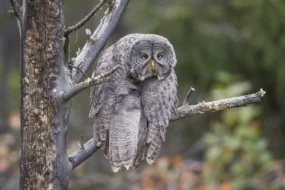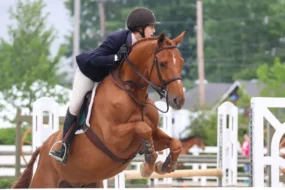
Horse lovers know the fun and excitement of training a horse. While it seems like a rewarding experience, effective communication between you and your horse is important for successful training. It is through proper communication that you build trust and respect, which allows your horse to listen to you and perform better. Many riders struggle to understand and interpret their horse’s signals, which can result in confusion, frustration, and even danger. Hence, it is vital to know the dos and don’ts of horse training. In this blog post, we’ll reveal the secret to communicating with your horse during training and explore the nuances of horse language.
Understanding the Horse’s Body Language

The first step in effective communication is understanding your horse’s body language. Horses communicate through subtle body movements, and it is essential to read and interpret these movements correctly. Some of the critical body languages signals to look for include:
- Ears: The position of a horse’s ears indicates its mood. Ears that are pinned back indicate that the horse is angry or annoyed, while relaxed ears indicate that the horse is calm.
- Eyes: The position of the horse’s eyes can tell you about its focus and attention. A horse with wide-open eyes is alert and focused, while a horse with half-closed eyes is relaxed.
- Tail: The position of the tail can also reveal the horse’s mood. A high-held tail indicates that the horse is alert, while a low-held tail indicates that the horse is relaxed.
- Body posture: The horse’s body posture can indicate its mood and level of comfort. A horse that stands square and still is relaxed, while a fidgety or tense horse may be uncomfortable or anxious.
Moreover, you can watch online videos on horse training to get a better idea. Clinton Anderson’s horse training videos are quite helpful in understanding a horse’s body language. Besides, it will help you communicate more effectively and develop a deeper bond with your horse.
Building Trust and Respect

Building trust and respect with your horse is critical for effective communication. Horses are herd animals, and they seek a leader they can trust and respect. By establishing yourself as a trustworthy and respectful leader, you can build a strong and positive relationship with them.
Now, to build trust and respect, you must be consistent in your actions, fair in your training methods, and establish clear boundaries. You must also be patient, as trust and respect take time to develop.
Effective Communication Techniques

Once you understand your horse’s body language and have established trust and respect, you can begin using effective communication techniques to train your horse.
- Clarity: Be clear and concise in your communication. Use clear and consistent cues to signal your horse’s desired behavior. Use positive reinforcement to reward your horse when it responds correctly.
- Timing: Timing is crucial in effective communication. Your cues and rewards must be immediate and well-timed to be effective.
- Consistency: Consistency is essential in training. Use the same cues and reward system consistently to avoid confusion.
- Release: Release your cues once your horse responds correctly. This will signal your horse that it has done the right thing and will help reinforce the desired behavior.
Examples of Clear Verbal Commands

When training your horse, it’s important to use clear, consistent verbal commands that the horse can easily understand. Here are some examples of verbal commands that are commonly used in horse training:
- Walk: This is used to ask your horse to start walking forward.
- Trot: This is used to ask your horse to start trotting, a faster gait than walking.
- Canter: This is used to ask your horse to start cantering, an even faster gait than trotting.
- Stand: This is used to ask your horse to stand still.
- Over: This is used to ask your horse to move to the side.
- Up: This is used to ask your horse to lift its hoof for cleaning or shoeing.
- Whoa: This is used to ask your horse to stop or slow down.
- Back: This is used to ask your horse to back up.
Remember to use the same verbal commands each time you ask your horse to perform a certain action, and be consistent with your tone and body language. Your horse will learn to understand and respond to your verbal commands with practice and consistency.
Taking a Quick Recap
By using these effective communication techniques, you can train your horse and build a strong and positive relationship with them. Give your horse sufficient time to get used to the training, and you’ll see progress over time.
To find out more:











